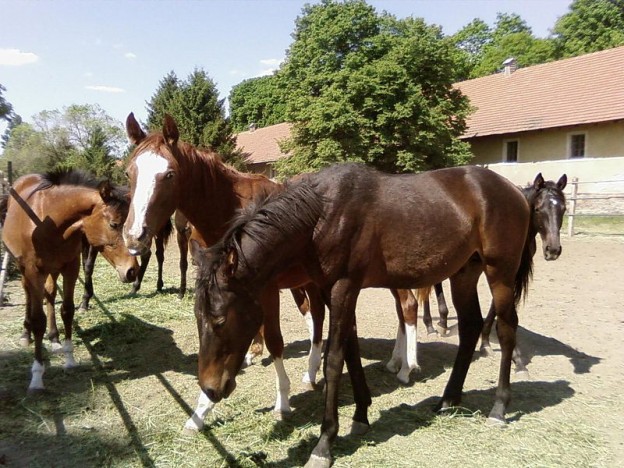On November 3, 2016, a 5 year-old Saddlebred displaying severe neurologic signs and a 10 year-old Saddlebred in Los Angeles County displaying moderate neurologic signs were confirmed positive for the non-neuropathogenic strain Equine Herpesvirus-1 at the California Animal Health and Food Safety Laboratory, according to a Equine Disease Communication Center (EDCC) alert.

Public domain image/Dusan Bicanski
Due to severity of clinical signs, the 5 year-old horse was euthanized on November 3, 2016. The Department has issued a quarantine for exposed horses at the facility and has implemented enhanced biosecurity measures. All exposed horses will have temperatures taken twice daily and be observed for clinical signs compatible with EHV.
The two confirmed positive horses, along with four other horses, recently returned from a horse show in Las Vegas, NV from Oct. 27-29, 2016. These horses returned to the California home premises on October 30.
Out of an abundance of caution, show management has notified trainers/owners participating in the event to recommend twice daily temperature monitoring and observation of compatible clinical signs. CDFA Animal Health Branch veterinarians are onsite monitoring the situation and will provide additional updates as they become available.
According to Veterinary Virology, Equine herpesvirus 1 (EHV-1) is a virus of the family Herpesviridae that causes abortion, respiratory disease and occasionally neonatal mortality in horses.
Initial spread of EHV-1 by a newly introduced horse through direct and indirect contact can lead to abortion and perinatal infection in up to 70 percent of a previously unexposed herd. Abortion usually occurs in the last four months of gestation, two to four weeks after infection of the mare. Perinatal (around the time of birth) infection can lead to pneumonia and death. Encephalitis can occur in affected animals, leading to ataxia, paralysis, and death.
See more about EHV-1 in the Merck Veterinary Manual.
Although humans can’t be infected by EHV-1, they can aid in spreading it to their horses. Therefore, owners of affected horses should wash and disinfect their hands and change their clothes before coming into contact with healthy horses to prevent the potential spread of these infectious organisms.
Related:


2 thoughts on “Equine Herpes Virus in Los Angeles County horses”